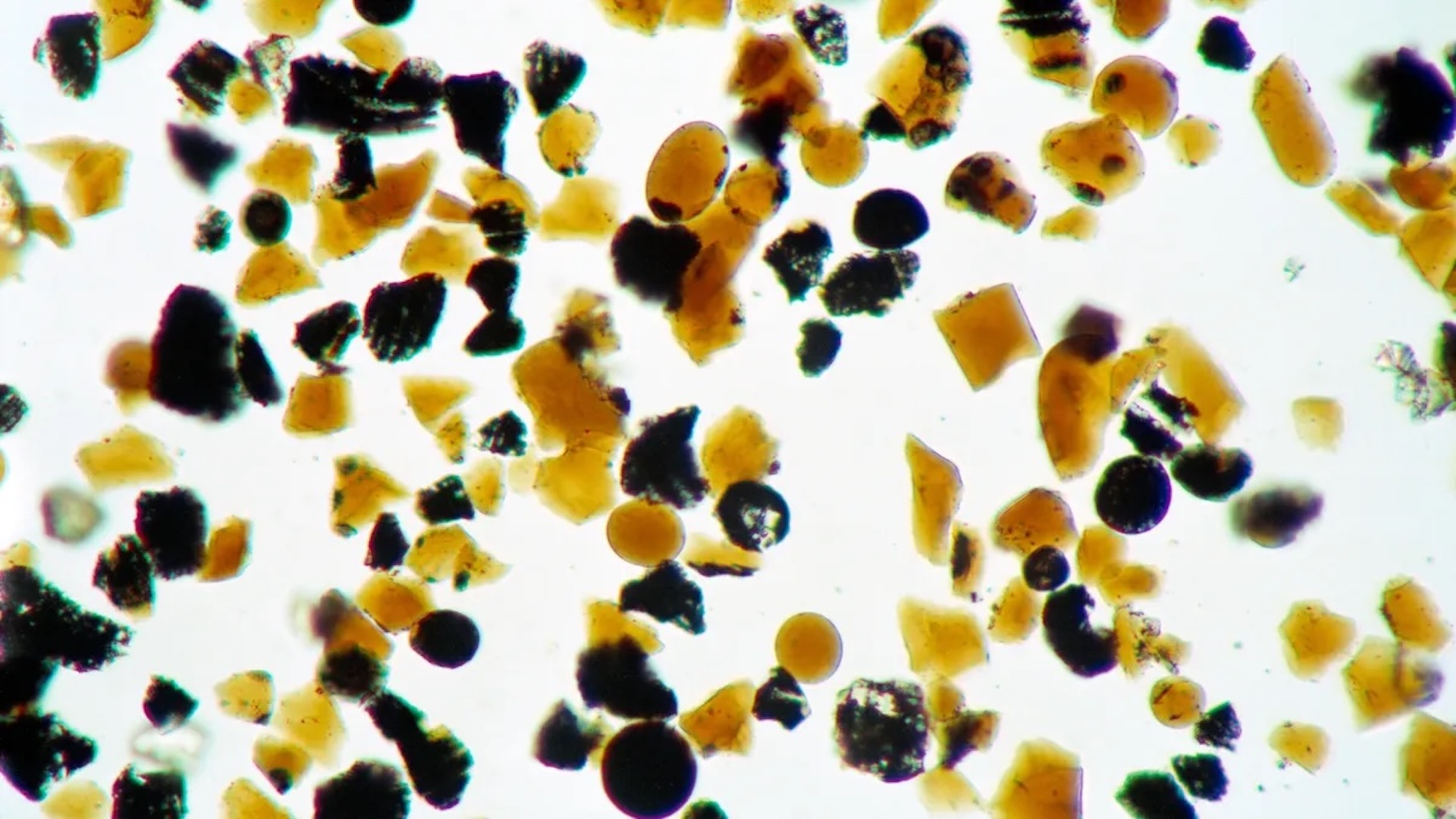Lunar Glass Beads: Tiny Windows into the Moon's Volcanic Past











2025-06-16T21:52:37Z

When Apollo astronauts first set foot on the lunar surface in July 1969, they anticipated encountering the gray rocks and fine dust that characterize the Moon's landscape. However, what they discovered was nothing short of enchanting: tiny, brilliant orange glass beads scattered across the Moon's surface like microscopic gems. Remarkably, these beads, each smaller than a grain of sand, serve as ancient time capsules from a period when the Moon was volcanically active, approximately 3.3 to 3.6 billion years ago.
The fascinating story of these glass beads begins with explosive volcanic activity that would have been a spectacular sight. These beads were formed during intense volcanic eruptions when lunar volcanoes propelled material from the Moon's interior to the surface. As the molten lava erupted, it cooled and solidified almost instantaneously in the Moon's cold, airless environment. Imagine the awe-inspiring spectacle of volcanic eruptions similar to Hawaii's magnificent lava fountains, but occurring in the vacuum of space.
What is particularly astounding is that, without an atmosphere to erode them or any weathering effects, these tiny glass spheres have remained unchanged for over three billion years. For half a century, these samples languished in laboratories, awaiting advancements in technology that would allow scientists to explore them more comprehensively.
“They’re some of the most amazing extraterrestrial samples we have,” remarked Ryan Ogliore, an associate professor of physics at Washington University in St. Louis. “The beads are tiny, pristine capsules of the lunar interior.”
Now, researchers have finally been able to investigate the intricate interiors of these beads using advanced microscopic techniques that were not available during the Apollo missions. The research team employed a range of cutting-edge tools, including high-energy ion beams and electron microscopy, to analyze the beads without causing any damage. They needed to be particularly cautious to protect the samples from Earth's atmosphere, which could potentially alter the ancient minerals that coat their surfaces.
What makes these beads exceptionally valuable to scientists is their diverse colors and compositions, each telling a different chapter of the Moon's volcanic narrative. Some beads shine in brilliant orange, while others are glossy black, with each variant unveiling details about the different eruption types that occurred over millions of years.
The minerals and isotopic composition found on the surfaces of these beads act as probes into the conditions—specifically the pressure, temperature, and chemical environment—during lunar eruptions that took place 3.5 billion years ago. Researchers have discovered that the nature of volcanic activity on the Moon evolved over time, offering important insights into the Moon's internal development.
As Ogliore eloquently described it, analyzing these beads is akin to "reading the journal of an ancient lunar volcanologist." Each tiny sphere harbors clues about the conditions deep within the Moon during an era when our solar system was still young and dynamic.
These glass beads serve as a poignant reminder that the Moon has not always been the calm, inert orb we behold today. Billions of years ago, it was a geologically active body, teeming with explosive volcanic activity that created these beautiful, microscopic windows into its history. As scientists continue to unlock the secrets held within these extraordinary beads, they shed light on the Moon's tumultuous past and its evolutionary journey.
 Aaliyah Carter
Aaliyah Carter
Source of the news: Live Science